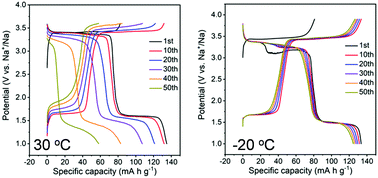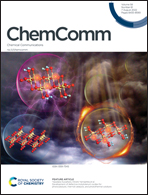Vanadium dissolution at 30 °C and its suppression at a low temperature of −20 °C for a Na3V1.5Cr0.5(PO4)3 cathode†
Abstract
Na3V1.5Cr0.5(PO4)3 cycled at 30 °C shows fast capacity decay, due to the migration of V ions into the electrolyte and the loss of V3+/V4+ redox. A low temperature of −20 °C attenuates V-ion dissolution, retains V3+/V4+ redox and improves the electrochemical performance, favorable for use in cold climates and high-altitude drones.

- This article is part of the themed collection: Electrochemical Energy


 Please wait while we load your content...
Please wait while we load your content...